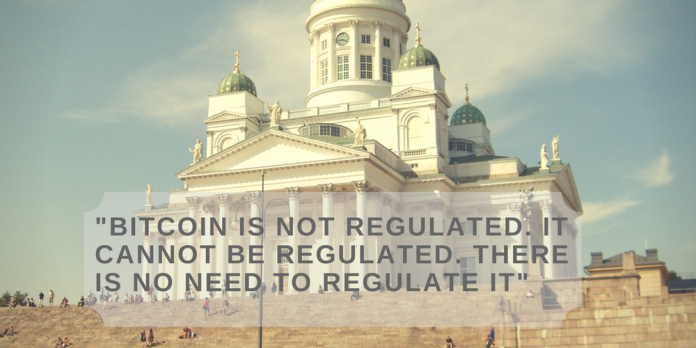In a research discussion paper entitled “Monopoly without a monopolist: an economic analysis of the bitcoin payment system” the central bank of Finland solidified its stance towards bitcoin and its optimism in regard to the emergence of a truly decentralized financial system.
The paper written by researchers, Gur Huberman, Jacob Leshno, Ciamac Moallemi delves deep into the technical intricacies, algorithmic and mathematical structure of bitcoin. The paper also evaluates the ability of bitcoin to create its own economy and peer to peer payment settlement system for users that is secure and efficient.
As the title of the paper suggests, the Bank of Finland perceives bitcoin as a monopoly run by a protocol, not by a central entity. The bitcoin network is operated by a decentralized community who contribute to an open source ecosystem. The researchers praised the distributed nature of bitcoin, which eliminates the possibility of a managing organization that could manipulate the market value, price, offerings and rules.
“Bitcoin is a monopoly run by a protocol, not by a managing organization. Familiar monopolies are run by managing organizations with discretion to determine and then change prices, offerings and rules. Monopolies are often regulated to prevent or at least mitigate their abuse of power,” the paper explained
Within the traditional finance industry, offerings and rules can be altered by a few managing entities and through the involvement of the government. For instance, the alteration of the inflation rate of the US dollar is solely decided by the Federal Reserve System of the US through quantitative easing, a central entity which directly controls the distribution of the US dollar. Within bitcoin, such managing entities do not exist. Alteration of offerings and protocol rules can only be completed through network and community consensus, by proposing and executing forks.
In software engineering, a project fork refers to the initiation of independent development on the copy of a source code. If developers, miners and node operators within the bitcoin network come to a consensus to update the protocol with several changes to the bitcoin codebase, they can do so by proposing a fork and completing the execution of either a soft or hard fork.
In order to complete the execution of a fork, the bitcoin network requires long-term consensus from every relevant party. Miners, developers and node operators are required unanimously agree to the change beforehand to meet the activation threshold. The decentralized nature of bitcoin creates a difficult and sometimes inefficient ecosystem for development. But, that can be considered as a tradeoff between decentralization and centralization. Although it is much simpler for centralized entities such as the Fed to manipulate the US dollar and create changes, the monetary system of the US is censorable, unstable and unsecure.
While many central banks such as the People’s Bank of China have expressed their negative attitude towards the unregulated system of bitcoin, the Bank of Finland stated the fact that bitcoin is not and cannot be regulated is a great advantage for bitcoin as a financial network. More to that, the Bank of Finland emphasized that the decentralized structure of bitcoin is revolutionary and it encourages economists to study the marvelous structure of bitcoin.
“Bitcoin is not regulated. It cannot be regulated. There is no need to regulate it because as a system it is committed to the protocol as is and the transaction fees it charges the users are determined by the users independently of the miners’ efforts. Bitcoin’s design as an economic system is revolutionary and therefore would merit an economist’s attention and scrutiny even if it had not been functional. Its apparent functionality and usefulness should further encourage economists to study this marvelous structure,” the paper added.
As bitcoin matures as a technology and as a financial system, an increasing number of financial institutions and central banks such as the Bank of Finland will recognize and acknowledge the revolutionary structure and technical intricacies of bitcoin.














